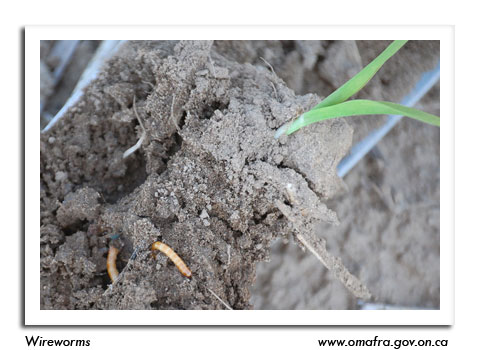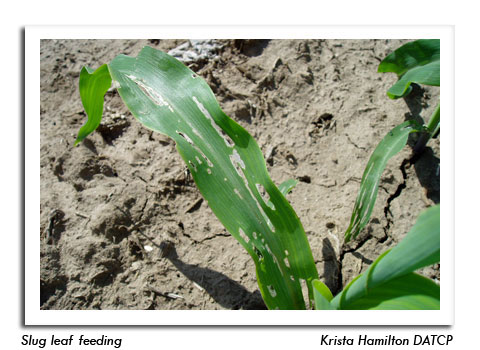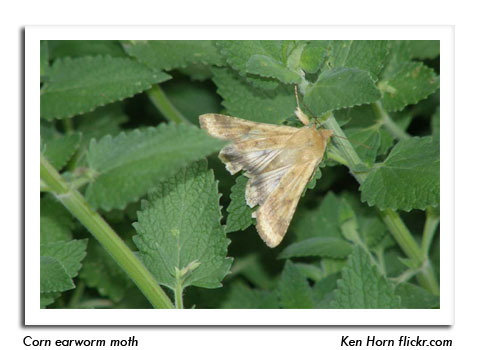
 |
|
|
Corn
Volume 62 Number 5 Date 05/25/2017 EUROPEAN CORN BORER - The corn borer phenology model suggests that egg deposition has started in areas of the state where 450 degree days (modified base 50°F) have accumulated, including Beloit, Lone Rock, La Crosse and Madison. If average temperatures prevail early next month, the first flight could peak from June 4-10 in the southwestern, south-central and west-central counties, June 11-17 in the southeastern and central areas, and a few days later in the north. BLACK CUTWORM - Larvae resulting from migration flights in late April and early May have grown large enough to cut emerging corn plants. Field conditions are highly favorable for infestations this spring and localized problems are expected. Corn with pre-plant broadleaf weed infestation, fields with cover crops that were terminated late, and sites with heavy crop residue (especially soybean residue) are at greater risk of infestation and should be routinely checked from emergence though the V5 stage. A threshold of 3% cutting of plants has traditionally been used as the point at which growers should consider a rescue treatment. Early and timely detection of cutworm infestations is critical for controls to be effective. WIREWORM - This soil pest, which can bore into the base of corn plants and destroy the growing point, has been found in corn in the west-central area of the state. It is not uncommon for both wireworms and black cutworms to occur in the same field at the same time. Accurate identification is imperative since rescue treatment for wireworms is ineffective once damage is observed. SLUGS - Minor leaf feeding has been observed in damp, weedy cornfields in Monroe and Sauk counties. Slugs may become increasingly prevalent if fields remain wet, particularly in no-till or reduced-till systems with heavy residue and little soil disturbance. CORN EARWORM - Although only one early migrant was captured in the Janesville pheromone trap from May 18-24, others are likely to have arrived in the state on southerly winds. These very early moths pose no threat to emerging corn. -- Krista Hamilton, DATCP Entomologist 





|
|
|